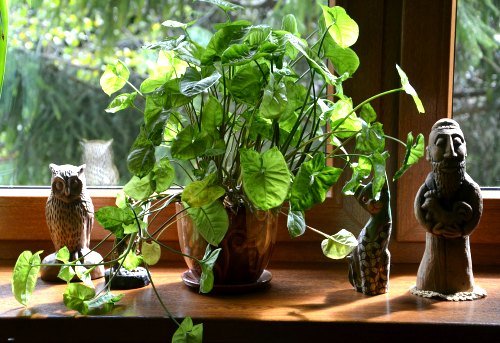
Common indoor plants can increase the oxygen content of the air by collecting carbon dioxide and breathing out oxygen. Many common indoor plants are also capable of eliminating hazardous material residues from the air. Your indoor plants’ ability to produce oxygen and filter the air is determined by a number of variables, including their species, size, health, and exposure to light.
Your plants’ capacity to release oxygen into the environment is significantly impacted by their immediate surroundings. Plants use their leaves to absorb oxygen, carbon dioxide, and other atmospheric gases as part of their natural respiration process.
Healthy plants absorb harmful traces of pollutants from the air and produce more oxygen than they consume under the right conditions. One of the main environmental factors prohibiting indoor plants from generating adequate oxygen is light.
When plants don’t receive enough light to support photosynthesis, they begin to absorb oxygen and exhale carbon dioxide. Plants that have evolved to thrive in direct sunlight will provide little oxygen to indoor growing environments unless they are placed beneath a strong light source or a south-facing window.
With so many variables at play, predicting how much oxygen a plant will produce is far more difficult. Plants produce oxygen as a byproduct of making sugar, which supplies them with energy. Slower-growing plants need far less sugar than faster-growing plants need in order to produce the same quantity of sugar and oxygen.
Due to low light levels, there is less photosynthesis, which results in less oxygen being created. Temperature, water content, and nutrition availability all have an impact on photosynthesis and, consequently, oxygen levels.
A plant uses photosynthesis to add carbon to its body, which includes its leaves, stems, and roots, by absorbing carbon from the atmosphere. The plant absorbs molecules of CO2 and converts them into carbon atoms and molecules of oxygen. The amount of oxygen produced may thus be roughly estimated by weighing the plant.
How Do Indoor Plants Increase Oxygen Levels?
Your plant’s health, size, and compatibility with your indoor growing environment will all affect how much oxygen and harmful chemicals it produces and removes from the air. Plants accustomed to direct sunlight will produce the most oxygen when put in front of a window with a southern exposure.
The amount of oxygen in your house also depends on how many plants you have. Indoor air quality may be considerably improved by growing one houseplant big enough to fill a 6- to 8-inch pot for every 100-to 120-square-foot piece of floor space.
Plants Also Produce Carbon dioxide (CO2)
Plants respire in addition to converting CO2 to O2 during photosynthesis. They turn sugar and oxygen into CO2 and water during respiration. This is the opposite of photosynthesis, and it occurs constantly in all cells, day and night.
Plants acquire carbon over time, which causes them to become larger and heavier over time. As a result, we can be certain that the amount of CO2 created during respiration is less than the amount of CO2 required during photosynthesis since they would not be able to grow otherwise.
Plants create less net oxygen as a result of respiration, particularly at night when there is no photosynthesis.
Do Indoor Plants Increase Oxygen Levels?
Actually, no. They do, however, only contribute a minor quantity of oxygen to the atmosphere. Compared to plants, people have a significantly greater impact on the O2 and CO2 levels in a space. If you wish to live somewhere with more oxygen,
The pace of ventilation, or the interchange of air with the outside, is the primary factor affecting healthy oxygen levels.
Conclusion
Plants make sugar and oxygen by combining CO2 with water during photosynthesis (oxygen). This truth is acknowledged by everybody. Without plants, humans would quickly run out of oxygen and perish since the generation of oxygen in nature is so vital.
Grow indoor plants for enjoyment, not because they can purify the air in your home.
We appreciate you taking the time to read our blog post. If you’re looking for more fun information about all garden issues, check out our blog post !
